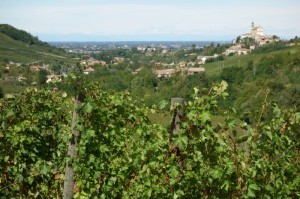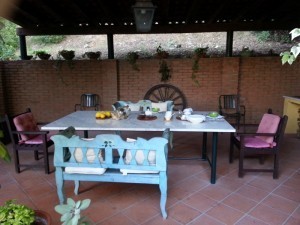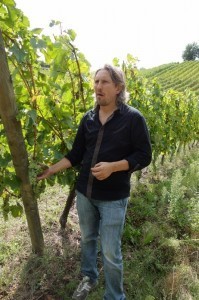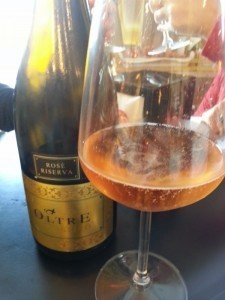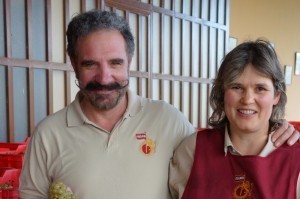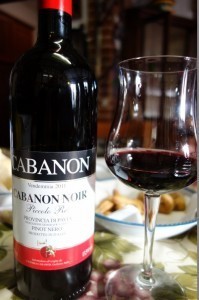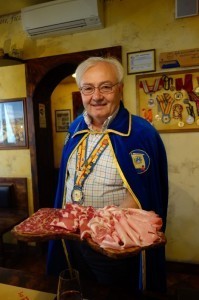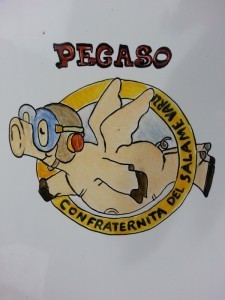Lisa Niver's Blog: We Said Go Travel, page 452
November 23, 2013
Argentina: “Dale Vida al Mundo Entregando Amor”
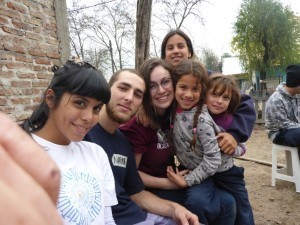 I’m still not sure where we went. We were miles outside the city now, and the roads were shrinking into oblivion. Wherever it was, it was a far cry from the bustling city lights and neon dreams that is Buenos Aires. On that bus, watching the sunset and horizon turn to mud in the distance, I began to understand what it meant for a place to be called Third World.
I’m still not sure where we went. We were miles outside the city now, and the roads were shrinking into oblivion. Wherever it was, it was a far cry from the bustling city lights and neon dreams that is Buenos Aires. On that bus, watching the sunset and horizon turn to mud in the distance, I began to understand what it meant for a place to be called Third World.
The buzz of Castellano voices and loud thuds from beaten tires on the bumpy road filled my brain, and I almost forgot how little I knew of the language. I almost forgot I hadn’t even been in Argentina a full week. I almost forgot, but not quite.
Our group of around fifty had split off from the hundreds of others to journey to our designated province, and our newly formed community practically buzzed in anticipation. But looking around, I didn’t see a skilled architect, a practical engineer, or anyone with particular physical strength. I just saw people. Usually, it takes more than people to build a house, much less a neighborhood.
Upon arrival, the older members of the group cautioned us to stay together on our walk to the schoolhouse, our temporary home for the weekend, because the neighborhood was especially volatile at night. The women were sent to the center of the pack as we tread through the mudded roads towards our safe house. Dinner and Maté couldn’t come fast enough for most, having been deprived of the tea for about two hours, which was practically a record for the entire Porteño civilization.
It’s amazing how little language is needed to connect with and understand another person. We are so much more than the words we know to say and the method of how to do so chosen by birth. Maybe it was the game of Ninja the group decided to play, maybe it was my awesome skills that won, maybe it was the way empanadas were passed from eight pairs of hands till they reached their owner, or maybe it was the way danced the hours away to the resident guitarist of the group. I’m not sure what it was, but we were friends after that. Turns out, we were going to need to be. Hours later, I felt the cold ground press roughly against my shoulder blades, despite the thin sleeping mats, but fell asleep faster than I can remember.
“Abre tu corazón, la vida se hizo para sembrar amor.”
I squeezed my eyes shut, daring them to open.
“Escucha bien escucha bien que la vida es muy Linda.”
Melody flooded the schoolhouse.
“Que nadie sabe cuando el señor nos lleva
Disfruta a tu madre a tu padre a tus amigos”
I forced my heavy lids open and smiled. We beat the sun out of bed that day and lapped him in the process. Meeting the family was a shock I wasn’t ready for, in that there were three families living in a small hut fit for only a few. Meeting the family was a shock in that they held more joy than I could hope to fathom even though they had nothing.
My heart ripped for Maxi and Ari, who had lost their parents and were each other’s only people. Ari had lived less than a decade, but held unparalleled levels of tenacity and strength. It was superhuman. Building the foundation of the house, he put every single ounce of energy possible for every thrust of the shovel into the rigid ground. I didn’t know it possible to be in awe of someone half your age.
Two days of manual labor flew by, because that was of no real consequence. Those memories do not linger. Those of dancing and twirling on break time with Maxi and the girls while they asked me to speak English for them and laughed uncontrollably when I complied; those linger. Memories of games and mud fights and races echo off the corners of my mind. Memories of gratitude and tears when the house was completed and was ready to become a home remain imprinted somewhere within me, incapable of being forgotten.
Memories of my inability to fight tears as we had to leave, which I knew for me would be for a lifetime, linger even though I wish they wouldn’t. I have never been more in awe of the beauty of a place or the beauty of a family. Joy was found in the mud, in the nothing. Joy was found in the living, and those they were living it with. To these people, perseverance was intrinsic and hard work a daily necessity. They broke me. I hope I am new.
About the Author: Julia Neeson is currently an undergraduate student at Texas A&M University majoring in General Business with Minors in English Rhetoric and Art. Interests include travel and dreaming of such, music that inspires, used bookstores, and laughing till I can feel my non-existent six pack.
The post Argentina: “Dale Vida al Mundo Entregando Amor” appeared first on We Said Go Travel.
November 22, 2013
New Zealand: New Zen
The inspiration to travel was first beckoned by New Zealand. There isn’t a single one point that was the calling, but rather the entire entity of the spirit. Perhaps it was the incredibly intrinsic Maori culture hosting a melting pot of peoples across the world. After finally making the trip of my life from Honolulu, Hawaii to Auckland I realized it was the whole of it; the heart of the lost land, displays of prehistoric ferns about as if fern gully fairies would buzz out from the steam of volcanic activity and the dinosaurs of land before time would be seen grazing along with sheep in vineyards lightly dusted with the first snow of winter. Everyone was incredibly open and warm despite the chilling weather, a hearth of generosity gushing. Gluten Free Friendly nearly everywhere we traveled, both north and south Island. New Zealand has it all, City life, rich ancient history still very much alive and thriving among the modern aged adornments of pleasures we seek like lush hotels and shopping. Everything was vibrating on a higher level, clean crisp air, rumbling earth. In those moments traveling the open road in our rented camper van complete with kitchen and bath these musing came to mind and slowly dripped like a brew of roasted coffee beans.
Dare to seek those places yet known within the open spaces of existence. The tumbling out of skeletons within, unleashed run wild with natural mystic flow allowing the deep well of inspiration to froth at the surface. Dance the dance of earthen play, cultures tangled and frayed, maybe, but atlas points the compass rose a direction surely not yet known. Taste bitter the pain of pleasures unfolded like petals of the sweetest roses prick releasing unbridled passion for the wanderers lusting. Chocolate, powder, prismatic ices, sink under epidermis dipping the bass line undulating waves of breath hot with mastering the art of life.
Cosmic connections continue currents casting cold calculated contouring.
Apricot Sky
Dragons Flying High
Puff & Tongue Out
Melted Mirror Glass
Trees of Shadows Cast
South Island given visions
All is one
The revolving sun
We lay our memories down
Hanging breathes
Forgotten pasts
Alive again at last
drum drum
I see you and I know
You have a story to tell,
Your eyes beg to spill
The tales of what have brought you to this place
Are the crinkles in your hair from the wind that blew through trees
Far beyond eyes of the moon
There still hardened
Earth mashed from tramping on your soles
Dare I say the lead of your day was a fool in love with you.
Fishing lures and golden gals
Dampened halls of lore, spitting fires
High top flowers below a silken sky…
A pyre of lush and lusts turned ash
Breath you never drew
Sipping sitting skipping stones
We are the ones you once knew.
Blonde grass binding sheep
Emerald green rivers flow
Jade stones with ruby to find
Red red wine and the creamy cheese
Earths wooly friends
Company by the fire sharing chocolate
Mental notes creating a song to sing for the rest of time
My love gave of roses taking on the thorn, just to see a smile
Most warm
New Zealand New Zen my dreams are filled with you!
Pioneers of city streets & goblet dreams
Masks of fortune
Told o coming markets gold
Lucky luster’s
Breaking ice
Carrying the fire old.
About the Author: Lace R. Coop. At the age of 21, the Travel Bug bit me. The winds of change and breeze of the abandoned wild blew through my young blonde locks inspiring me to sell everything, quit my job, leave the Midwestern town I grew up in and wander the great wide open! You never know if you never truly try, so why not LIVE to the fullest and fill your cup with the bubbling zest of TRAVEL! Flying on the wings of thrill. Hoop Dancer, Writer, Graphic Artist, Foodie, Wino, Luster of Life. LETS GO! Visit my blog.
The post New Zealand: New Zen appeared first on We Said Go Travel.
A Gift from Nicaragua
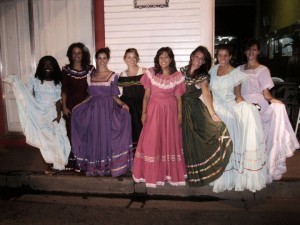 Last year, around this time I wrote an article about an experience I had when I traveled to Granada, Nicaragua in 2011. I remember the positive and negative feedback that I received from some of the readers. I wrote the article to inspired individuals to observe the similarities that some Americans have with some Nicaraguans. I thought that if I wrote the article and proved that there is poverty in America, and that are similarities, readers would have a different perspective about both countries. I am very grateful that I had the opportunity to visit Nicaragua because the trip changed my views about poverty, and now I am always giving back no matter what affect it may or may not have on an individuals.
Last year, around this time I wrote an article about an experience I had when I traveled to Granada, Nicaragua in 2011. I remember the positive and negative feedback that I received from some of the readers. I wrote the article to inspired individuals to observe the similarities that some Americans have with some Nicaraguans. I thought that if I wrote the article and proved that there is poverty in America, and that are similarities, readers would have a different perspective about both countries. I am very grateful that I had the opportunity to visit Nicaragua because the trip changed my views about poverty, and now I am always giving back no matter what affect it may or may not have on an individuals.
My naïve thoughts of why some of the locals and Americans were not doing anything to change their lifestyles, or how I thought that they have given up on life caused me to stop giving out donations. Now, reflecting on this journey, and thinking about the two Nicaraguans that I met, I now realized that they were doing something to improve their lives, and I should help in any way that I can.
The images of the little Nicaraguan boy who watch me eat my dinner at local restaurant in Granada, and then later fought over my leftovers with a group children will always stay with me…
One night a group of friends and I went to a restaurant where a group of Nicaraguan children were performing and selling goods to the tourists. One of the younger boys kept staring at me while I was eating. I told him to come over to my table. The little boy quickly came to the table, but as I placed the plate in front of him, all of the children gathered around us and began reaching for his food. A fight broke out between the little boy and another boy. My heart was pounding because I had never seen children fight over food in this way. There were cries, yells, and screams, and punches that filled the surrounding area. I got up to sit at another table with my friends. The little boy decided to come to the table where I was sitting, after he had finished fighting. I asked him “¿Porque estabas peleando? Why were you fighting?
He said, “Ellos llevaron mi comida entonces yo peleé con ellos porque yo no tengo comida. Por favor dame más comida. They took my food so I had to fight them because I don’t have food to eat. Please give me more food.
The lady who sat on the stairs affected me the most, and because she did not speak and only stared kept me wondering about what she was thinking…
The lady had stained clothes and dirt splotches on her body. The expression on her face drew pity from me. I immediately reached into my pockets to give her money. I still remember like yesterday the expression on her face: Her eyes stared into space, and they never moved even after I had emptied my pockets.
Though I can not go back in time and change my words, or even empty out my pockets to every homeless purpose that I met; however, I can think more wisely about my life and what I want to get out of it, and hopefully it will inspire others to do the same.
About the Author: My name is Andrea Scott and I am 23 years old. I am a Saint Louis native, and I work at an Immersion School in the city of Saint Louis. I have a BA in Journalism and Spanish. I am bilingual in English and Spanish, and I have studied in several parts of Central America. I love to read, travel, and write.
The post A Gift from Nicaragua appeared first on We Said Go Travel.
Wishing for Advice on Traveling?
 Taylor from US City Traveler asked us and 33 other travel bloggers:
Taylor from US City Traveler asked us and 33 other travel bloggers:
What’s the one thing you wish you’d known before you started traveling?
Enjoy the article for great advice from many travelers from all over the planet.
CHECK OUT THE EASY DOES IT SECTION for our answers!
6. George: “How easy it was to travel independently.” Lisa: “Before I started traveling, I was always worried about bringing the right things and my bags were very heavy and filled with many unnecessary items. Now I know you can buy nearly anything you need along the way and as George taught me “It always works out!“
George & Lisa Rajna, WeSaidGoTravel, @WeSaidGoTravel
READ THE 33 ANSWERS: CLICK HERE
Do you have more questions? Let us know what do you want to know!
Where are we now? San Juan Del Sur, Nicaragua
There is still time to enter our Gratitude Travel Writing Contest: Contest closes Nov 28. Free Entry. $1,000usd in Cash Prizes!
More about us? Read our memoir, Traveling in Sin, to learn about our first year sabbatical! It is available from Amazon!
Traveling in Sin is a TOP TEN Hot New Release! from Lisa Niver Rajna
The post Wishing for Advice on Traveling? appeared first on We Said Go Travel.
Scotland: New Year on Conic Hill
New Year’s Eve in a Scottish new town, and it was strangely subdued – the lull before the storm of celebrations. Then as midnight approached, tall, dark-stroke-red and (allegedly) handsome men (for these are the necessary credentials of the first-footer) crept out onto the streets armed with whiskey, a tumbler, shortbread, and a piece of coal. All along the street, the first-footers huddled up against doors like stray cats waiting to escape the cold.
As I stood in the hallway, I heard the muffled rumble of low voices outside, then laughter, the ‘glug, glug’ of whiskey being poured, and the clink of glasses. Neighbours caught up with a year of news, visiting family members sometimes decades. As the celebrations sprang into action, our household slipped off to bed; we had other plans.
Snatching a few hours of sleep, we were up again come six. While the town dropped off into an exhausted slumber, we stumbled bleary-eyed to our car and headed northwest. The streets were deserted except for a lone figure weaving a drunken path.
We curved round the shadowy base of the Campsies, black humpbacks in an inky sea of sky. Finally we arrived at the shores of Loch Lomond. It was almost seven, and Scotland still slept.
Silently, we ducked into dark woods. I breathed in the sweet smell of peat and pine. This is where I wanted to be. Ahead the ice-covered path rose up, a guiding strip of pale neon in the darkness.
“I’m glad we’re not in America,” my son whispered as we slid through the trees.
“Why America?” I whispered back.
“If there was a bear right in front of us, we wouldn’t see it!”
The sky changed from black to ink-blue to powder-grey. Dark silhouettes slowly took on texture and colour. We reached the gate that would take us up Conic Hill. Soon we were climbing steeply upwards. Down below us, orange lights scattered across the valley like marigolds on the Ganges.
Light was seeping through the sky now like a pale dye spreading through fabric. We were close to the summit. It was a hands and knees job as we scrambled ever upwards; nothing between our feet and Loch Lomond and the tens of islands strewn across it.
Then we were on top. Giddily, I texted: ‘Happy New Year from Conic Hill’. You would think I’d just conquered Everest – and so I had in my mind.
We followed a wide runway of green grass down off the hill. Ahead, the ridge and the Loch islands cut a straight line to the hill on the other side – the Highland boundary fault line. I felt I could take off with a hop and skip across the islands, over Greenock, the Isle of Bute and the world beyond. I felt anything was possible. The world was mine.
But instead we dropped down to the shore of Lomond. Father and son skimmed stones over the ice. The dull thud-thud-thud of the bouncing stones echoed around the loch and the snow-marbled mountains.
It was an hour, and a million light years, from the grey concrete town.
About the Author: Helen Moat spent her childhood squished between siblings in her Dad’s Morris Minor, travelling the length and breadth of Ireland. She’s still wandering. She blogs at: http://moathouse-moathouseblogspotcom.blogspot.co.uk/
The post Scotland: New Year on Conic Hill appeared first on We Said Go Travel.
November 21, 2013
Writing: a 21st Century Requirement? Enter Now in our Gratitude Travel Writing Contest

Lisa and George are coconuts about writing!
Is Writing a 21st century Requirement? Enter our Gratitude Travel Writing Contest until Nov 28.
My favorite part of publishing travels stories on We Said Go Travel is getting to cybermeet people from all over our planet. I love stories about honeymooning in Murree, Pakistan or a first solo travel in South East Asia, when an author tells about a place they love or that transformed them I am always interested.
Often people ask me how to write better. My recommendation is to read Write Out Loud, a book designed to help high school students write their essays for college. As Carol Barash states, “When you master your stories, you master your life. And when you change your stories, you change your life.” Her simple steps to improve your writing by sharing “the three D’s: details, dialogue, and description” will help you. In the 21st century, everyone has to tell their own story and be their own best marketer. “’No matter your age, it is now required that you can share stories that reveal your character, and what the world looks like from your perspective.” Participating in any profession or social media network necessitates you to tell your tale and in an engaging manner.
I completely agree with Barash that “When you put yourself and your experience into an issue, you instantly raise the stakes and people need to take you seriously. They may not agree with you, but they are likely to respect your passion, commitment, and willingness to be vulnerable in the service of others.” Once you find a way to tell your stories you may be surprised at the doors that open for you. Practicing makes it easier.
There are “massive open online courses (MOOCs) and other online training programs. There are core competencies in many fields that you can now study—for free or nearly free—from the top professors at the top universities. Take a look at everything that is offered on Coursera and Udacity.” You can create your own free blog or publish on someone else’s but everyone has a story to share.
Wondering what you need to do? Using the Moments Method, you will learn to focus on key issues: “Does the essay explore specific events, or does it remain general? Does the essay draw the reader in right from the start? Does the essay leave the reader with a feeling that maybe he or she has met you before or wants to meet you in person and learn more about you?” After working on the exercises, I am certain you will be a better writer.
“Neuroscience research shows that when people listen to a story there are three immediate responses: their brains trigger memories of similar stories; they feel empathy; and they have a desire to take action.” I hope you will consider sharing a story of transformation with our growing global community; we cannot wait to learn more about you. Remember, “stick to the actions, dialogue, and details to show your reader what you realized, thought, or felt.” Some of the best tales about what happened nearby or in your own backyard. “Reveal the depth of your character, your intellectual curiosity, the impact you had on your local community, and the impact the community has had on you.”
Ready to Share Your Story?
Enter our Gratitude Travel Writing Contest until Nov 28.
Free Entry, $1,000usd Cash Prizes!
The post Writing: a 21st Century Requirement? Enter Now in our Gratitude Travel Writing Contest appeared first on We Said Go Travel.
Hong Kong: A Private View
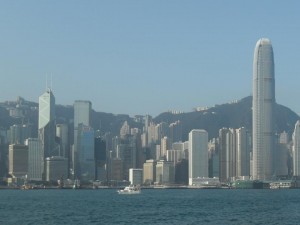 I awake in the dark. Where am I? Momentary befuddlement is replaced by a kaleidoscope of recollections. The journey. The excitement of arrival. The dizzying intoxication of new sounds, sights and smells. Marvelling at the dazzling beauty of Hong Kong, her skyscrapers illuminated like stars in the firmament. The captivating juxtaposition of East and West. Feeling almost overwhelmed by the sheer mass of humanity, the thousands-strong crowds of people intent upon business or shopping. Before finally surrendering to an exhausted sleep.
I awake in the dark. Where am I? Momentary befuddlement is replaced by a kaleidoscope of recollections. The journey. The excitement of arrival. The dizzying intoxication of new sounds, sights and smells. Marvelling at the dazzling beauty of Hong Kong, her skyscrapers illuminated like stars in the firmament. The captivating juxtaposition of East and West. Feeling almost overwhelmed by the sheer mass of humanity, the thousands-strong crowds of people intent upon business or shopping. Before finally surrendering to an exhausted sleep.
I draw back the curtains. Yes! I really am here. The lights of Victoria Harbour sparkle like coloured jewels against black velvet. I’m reminded of childhood Christmases, of multi-coloured fairy-lights on the Christmas tree and the same bubbling sense of anticipation about the day ahead. I curl up in a chair by the window and feast my eyes on the scene before me. There is no traffic, no noise, no one else around. For the moment this magnificent vista is mine alone.
Dawn breaks. Mountains appear as smudges of grey which develop, like a Polaroid, into looming masses of dark vegetation. The inky sea fades from black to grey, grey to blue. The brightening sky reveals a host of iconic buildings. The softly curving roof of the Hong Kong Convention & Exhibition Centre contrasts with the fierce spike of Central Plaza. The squat HSBC headquarters, once the most expensive building in the world, is now overshadowed by the zigzagging Bank of China Tower. Most impressive of all is the regal Two International Finance Centre which towers over its neighbours, reinforcing its air of majesty with its crown of claws.
I leave my hotel and head down to the waterfront, admiring the splendid skyline on the distant shore. It is winter here but to me, recent escapee from a cold and dismal London, it feels like balmy spring. The sunlight sparkles on the blue sea and the air is so warm I have no need of my jacket. I watch the ships sailing through the harbour: tiny fishing boats, barges laden with containers full of goods, several yachts, a classic junk, even a gigantic cruise ship – bigger than I could ever have imagined!
This area is normally heaving with tourists but so early on a Sunday morning I have the luxury of solitude. It is the Lantern Festival, the last celebration of Chinese New Year, and the promenade is decorated with huge, colourful lanterns in the form of the Chinese zodiac (rat, ox, tiger, rabbit, dragon, snake, horse, goat, monkey, roster, dog and pig). This is the Year of the Dragon so the largest lantern of all is, of course, a dragon and there are dragon themed decorations, posters and even cuddly toys on display throughout the city.
I find myself at the deserted Star Ferry terminal and board the ferry to Central. I am the sole passenger and the six minute crossing, with its unparalleled panoramic view of Hong Kong island, is one of the most magical and memorable experiences of my life. All too soon I have to disembark, and I discover today is the Hong Kong marathon. Friendly volunteers are preparing for the arrival of the runners and their supporters, and they greet me with smiles and cheery hellos.
The city begins to stir. Three ladies are practising Tai Chi together in a pristine public park. A family with two adorable little girls passes by, clearly on their way to church. An elderly man, well wrapped up in a coat and scarf, enjoys the sunshine while smoking a cigarette. The traffic builds as cars and taxis are diverted around the race route. Shops open. Cafés fill with customers. Everywhere there is hustle and bustle. I set out to explore, feeling immensely privileged and grateful for my unforgettable, private introduction to this vibrant and cosmopolitan city.
About the Author: After a nomadic childhood Caroline Hawkins moved to London to study at UCL, graduating in 2000 with a B.Sc. in History and Philosophy of Science. Her many interests include art, writing and travel.
The post Hong Kong: A Private View appeared first on We Said Go Travel.
Italy: The Oltrepo Pavese
Located 40 minutes south of Milan, the capital of the Lombardy region, is the town of Pavia, home to one of the oldest universities in Europe (1361). And, just across the river from Pavia sits the region of Oltrepò Pavese, which means just that. It is “on the other side of the Po River from Pavia”. Because of its rolling hills, it is frequently called the “Tuscany of the North” but although the Oltrepò Pavese is one of the largest wine producing regions in all of Italy, it is still fairly unknown, which makes it a great “off-the-beaten” path place to visit.
To get the full vineyard experience, look no further than the charming bed and breakfast Villa Arabella, owned by Paul and Arabella Lizioli. With only three rooms, their home is peaceful and luxurious and the breakfast that Paul makes in the morning will give you the perfect start to your day. If you want to relax and be lazy, you can spend the day at Villa Arabella, relaxing by the pool, looking out at the vineyards.
Of course there is alot of wine tasting to do in the area. In the area, you can find the local grapes Croatina (which makes Bonarda), Pinot Nero (pinot noir), Barbera, Riesling and Moscato, as well as Chardonnay and Pinot Grigio. In addition, there are a lot of champagne-style sparkling wines made in the area. Be sure to make an appointment in advance but visit are Ca’di Frara for a tasting with fourth generation winemaker Luca Bellani. Luca makes beautiful sparkling wines, including a Rose which always makes me smile, after all, I do say that “pink wine makes me happy”. Another winery to try is Cabanon with female winemaker Elena Mercandelli who began making wine when she was 14. While they don’t make sparking wines, they make Cabernet Sauvignon, Barbera, Pinot Noir, Riesling and Rose, as well as grappa.
In addition to wineries, there is a goat cheese farm and a salumi factory to visit as well!
Il Boscasso has been owned by Maria Chiara Onida, a former mathematician, and her husband Aldo Galbiati for 25 years. After studying the genetics of goats, she recognized a certified strain called camosciata dell alpi, which she breeds and also produces a range of pure creamy cheeses including ricotta, herb, blue cheese and wrapped in walnut leaves.
La Piola and the salumi factory is owned by Giorgio Perdoni, Grand Master of the Confraternity of Salame di Varzi. Salame di Varzi (salami from Varzi) DOP, dating back to the 13th century, is made exclusively with most valuable cuts of pork, such as the leg, shoulder, loin, coppa, and filet, with the addition of cheeks and bacon for the fat parts. The proportion of the various cuts is established in the production rules and is currently overseen by the Consorzio di Tutela (Consortium for the Protection of the Salame di Varzi DOP.) There are 85 members of the fraternity and to become a member, you must fill our a formal application and be approved. What do they look for in members? Foodies who enjoy life! Perhaps that’s you!
If you do feel like exploring beyond the Oltrepo and have a few days, try the walking tours of the old salt trails that will take you from Lombardy to Liguria. This is an unexplored area just waiting to be explored!
The post Italy: The Oltrepo Pavese appeared first on We Said Go Travel.
Angkor Wat: A Journey of Life and Beauty
 Walking through the Angkor Wat and experiencing its majestic nature felt like a lifelong ambition of mine had been completed. I arrived by tuk-tuk in the mid-day tropical sun, beating down upon me and the surrounding complex as if God himself relinquished all his power and energy to show me, in all its glory, the significance of this wonder.
Walking through the Angkor Wat and experiencing its majestic nature felt like a lifelong ambition of mine had been completed. I arrived by tuk-tuk in the mid-day tropical sun, beating down upon me and the surrounding complex as if God himself relinquished all his power and energy to show me, in all its glory, the significance of this wonder.
I strolled slowly on the walkway leading towards the entrance of the temple, my head held high in an almost permanent state. The five ancient temple towers representing Hindu spiritualism drew me in as I became closer to the outer 12th century façade.
My surroundings transported me to a by-gone era, an ancient civilisation in the midst of religious power and might. Fellow travellers near me seemed to disappear into non-existence; it felt like I became one with the Khmer people and their beliefs.
The temple unhurriedly attained developing depth and complexity with every stride I took. What gazed upon me suggested Vishnu himself devised such an exquisite sanctuary. I brushed my hand upon the stone-cold exterior and instantly felt a rush of hope – of almighty grace and importance.
I stopped still and closed my eyes. My five senses were at maximum level, bringing alive the magical awe-inspiring feeling I had read so much about in previous journals and diaries documenting this area. I felt, for the only time I have felt during my travels, a sense of bewilderment and wonder.
This is the Angkor Wat, the land of enchantment.
I continued through the crumbled yet dignified main entrance, finding myself immersed in its interior. My head – constantly moving at all angles – absorbed every single fragment of its architecture; it was nothing I had ever seen before. The walls were a diminished grey colour, due to this I felt the temple had aged; bringing it into a higher level of wisdom with an impressive story to tell its pilgrims.
Like a living and breathing organism, the mysterious pull of the temple grabbed me further into its heart. I continued walking, constantly in awe around me as I touch and feel my way round. I found myself to be outside again, but within the internal structure of the site. The sunlight touched my skin to create a warm feeling, one of tranquillity and calm. I felt like the temple wanted me to be at peace.
One of the most striking elements of the Angkor Wat is the five towers that rise above the rest of the temple. I stopped, wiped my face with a cloth to freshen myself, and took a moment to gaze upon one of them. A rather steep flight of stairs seemed to lift into the air flowing into the mouth of one of the towers. My inquisitiveness got the better of me, so I started towards them.
The sense of elevation as I climbed the stairs gave me a feeling of undertaking a trial, that to truly understand and comprehend the beauty of this complex then a physical and mental challenge must be undertaken. I gladly accepted myself to participate in this, with most other tourists crowding around the base of the stairs taking photographs or idly sitting down drinking copious amounts of water.
I climbed higher and higher. The baking temperature was beginning to make my skin turn a pinkish hue and my forehead was trickling with beads of sweat. The magnificence and beauty of the Khmer civilisation propelled me into succeeding, I thought to myself. I had to see this.
Upon reaching the top I staggered and caught my breath. I took a big gulp of water, wiped my mouth and slowly turned around to see the view that I had reached. The view was astonishing. As far as the eye could see, lush green fields dotted with healthy tropical trees surrounded the vicinity. The moat surrounding the Angkor Wat could be seen, acting as its natural protector – but looking ever so tranquil and calm. Small families of monkeys could be seen relaxing in the natural playground the site had to offer. This is how the ancient Khmer would have felt, and wanted future generations to feel. I was seeing life at its most beautiful. I spent awhile staring wondrously at the Cambodian frontier, feeling awe-inspired and touched.
About the Author: I am interesting in travel and seeing the world, having been to South East Asia twice and seeing most of Europe. My next adventure see’s me exploring this Asia for the third time, including Australia and North America. Graduating with a Geography degree in 2013, this propels my interest even further and I am thinking of undertaking postgraduate study. I also very much enjoy writing.
The post Angkor Wat: A Journey of Life and Beauty appeared first on We Said Go Travel.
November 20, 2013
A Short Break to Cyprus
Cyprus is a fascinating destination that despite it’s small size, has an abundance of activities and things to see. It’s long, rich history has helped shape it’s landscape over the centuries so that ruins and buildings can still be seen to this day, coexisting harmoniously with modern day Cyprus.
The third largest island in the Mediterranean sea, Cyprus sees no shortage of sun-seeking tourists looking for a relaxing beach holiday. If that’s what you’re looking for, you won’t be disappointed – the Cypriot coastline is awash with clear, blue waters. However, there’s so much more to Cyprus than initially meets the eye.
Here’s my recommendations for a short holiday in Cyprus, add your own in the comments below!

By Dickelbers, via Wikimedia Commons
The Last Divided Captial
The capital Nicosia, is unique on this planet as the last divided capital city. You can still see the guard towers and barbed wire that line the Green Line, marking the division between North and South. You can now walk the length of Ledra street, the connection between North and South unhindered. The northern part of the city is well worth checking out, and of particular merit is the Great Inn. Also, worth a stop is a traditional Turkish bath in any one of the old bathhouse dotted around the north of Cyprus.
Strolling around the Cypriot capital is an adventure all on it’s own. Combine it with stops in charming coffee shops or restaurants serving local food & Cypriot wine and you’re off to a winner!

By Dickelbers, via Wikimedia Commons
The Resorts & Nightlife
Cyprus has a well-earned reputation as one of Europe’s hottest nightlife destinations. Young revellers are attracted by the sun and beach resorts by day, and the nightclubs and bars by night. Parties go all night long and are a huge draw for tourists. Ayia Napa in the South East has the biggest reputation of them all, and if visiting during peak season, be prepared for the insanity!
There’s one club that stands out amongst the crowd and that is the Castle Club. It is consistently ranked in the top 50 clubs in the world year on year and with good reason, it is incredible. If you’re looking to continue the day time pool theme, River Reggae and Aqua both have indoor pools.

By Romeparis, via Wikimedia Commons
Paphos & the Tomb of the Kings
The south west city of Paphos is an absolutely beautiful city and the best setting to explore this region of Cyprus. Rather fittingly, it is the birthplace of Greek goddess Aphrodite. It is designated as a UNESCO world heritage site and just by walking around, you’ll see why : ancient ruins are dotted throughout the city, well-preserved and maintained throughout. Take a stroll through the lower Kato Paphos and you’ll come across ancient Roman villas and taverns.
A must see ancient attraction located north of Paphos, the Tombs of the Kings is a well-preserved burial site that is a great way to spend an afternoon exploring. The tombs were carved into the caves around the 4th or 5th century BC and give a glimpse of how life was back then.

Mgiganteus1 , via Wikimedia Commons
Food & Drink
My favourite part of travel – the food! Cyprus doesn’t disappoint. Benefiting from separate Greek and Turkish influences, the Cypriot cuisine has combined elements from both into a unique palate that delights the senses. The epitome of typical Cypriot food is the humble Kebab, to be found on literally every street corner. If you can’t see one, you’ll certainly smell one so just follow your nose and you won’t go far wrong.
For real local Cypriot fare, look our for Meze, which you could liken to Spanish tapas. They often come in meat or fish varieties, with the best a combination of both. Some restaurants serve nothing but meze, and you could do no better than checking out the family run Meze Taverna Restaurant in Limassol.

Home cooked Meze, by Ccarlstead, via Wikimedia Commons
Another local favourite is Haloumi cheese, which is becoming more and more popular overseas. It’s a unique flavour, made from mixing cow and sheep milk, it’s texture is hard and salty but it is often grilled so it becomes softer and lighter. You won’t need to look too hard to find it, it should be on the menu of most local restaurants.

Grilled Haloumi with Mint Pesto

Fresh Haloumi Cheese
No matter if you’re looking for a sun holiday or a cultural tour, Cyprus offers both in abundance. Have you been to Cyprus? What are your recommendations, comment below!
The post A Short Break to Cyprus appeared first on We Said Go Travel.
We Said Go Travel
We Said Go Travel is a global community of over sixteen hundred writers with articles from every continent.
Stories are shared with photos and video from a perspective of the transformative power of travel. We Said Go Travel has hosted live and online events as well as travel writing contests around the world. ...more
- Lisa Niver's profile
- 57 followers




